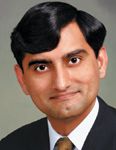- Acne
- Actinic Keratosis
- Aesthetics
- Alopecia
- Atopic Dermatitis
- Buy-and-Bill
- COVID-19
- Case-Based Roundtable
- Chronic Hand Eczema
- Chronic Spontaneous Urticaria
- Drug Watch
- Eczema
- General Dermatology
- Hidradenitis Suppurativa
- Melasma
- NP and PA
- Pediatric Dermatology
- Pigmentary Disorders
- Practice Management
- Precision Medicine and Biologics
- Prurigo Nodularis
- Psoriasis
- Psoriatic Arthritis
- Rare Disease
- Rosacea
- Skin Cancer
- Vitiligo
- Wound Care
Article
Elements underlying beauty provide guide for surgeons
Baltimore — While there is general agreement that certain features define female facial beauty, it is often some idiosyncrasy that distinguishes exquisite beauty from ordinary attractiveness, according to Murad Alam, M.D., speaking at the East Coast Dermatology Seminar, here.

"When cosmetic surgeons undertake the goal of improving a person's appearance or making someone seem more youthful, it is important to have certain ideals in mind that will guide you as to what you are moving away from and to what you are trying to achieve," says Dr. Alam, chief, section of cutaneous and aesthetic surgery, departments of dermatology and otolaryngology, Northwestern University, Chicago.
"However, while aiming for certain commonalities, our interventions should not lead to creation of a set of clones," he says. "There are racial and ethnic differences associated with beauty that should be maintained, as well as distinct features unique to the individual patient that will enhance special beauty."

"For example, in a study where a series of photographs of people from different ethnic-racial backgrounds were digitally altered to thicken the lips and then scrambled, viewers across different cultures asked to rate the appearance of the people in the photographs consistently find those with fuller lips more attractive," Dr. Alam says.
"This information tells us that our filler procedures for lip augmentation or botulinum toxin injection to achieve eyebrow symmetry are not arbitrary interventions, but are really recreating attributes that are widely considered as indicators of youth and beauty."
Further evidence that the average face exhibiting all of these features is considered most beautiful comes from studies where series of photos are combined into a single composite. People judging those photos generally consider the composites more attractive than most of the photos from which they are derived.
"Presumably, the averaging process seems to soften asymmetries and unusual blemishes that would lessen the attractiveness of the individual," Dr. Alam notes.
Beauty found in exaggeration
However, the most beautiful faces are not average. Rather, they have many of the components of ideal beauty plus some felicitous exaggeration of one or more anatomic features, and there are many examples of this among models and movie or TV celebrities. The fact that winners of the Miss World or Miss Universe contests over the past several decades consist of women representing a variety of countries from different regions of the world support the view that people can be racially and ethnically distinct and still be beautiful.
Dr. Alam tells Dermatology Times, "Satisfying the quest for beauty should involve collaboration between the patient and physician in order to come to goals that are mutually recognized to be in the patient's best interest. Our surgery should aim to get closer to some common features of beauty but also be careful to preserve each individual's unique features and ethnic characteristics."
He adds that cosmetic surgeons may sometimes be plagued by concerns that they are trying to transfer their own desires or motives onto their patients when performing appearance-altering procedures. However, the reality is that people crave beauty because of its societal implications for access, recognition and power.
Newsletter
Like what you’re reading? Subscribe to Dermatology Times for weekly updates on therapies, innovations, and real-world practice tips.













